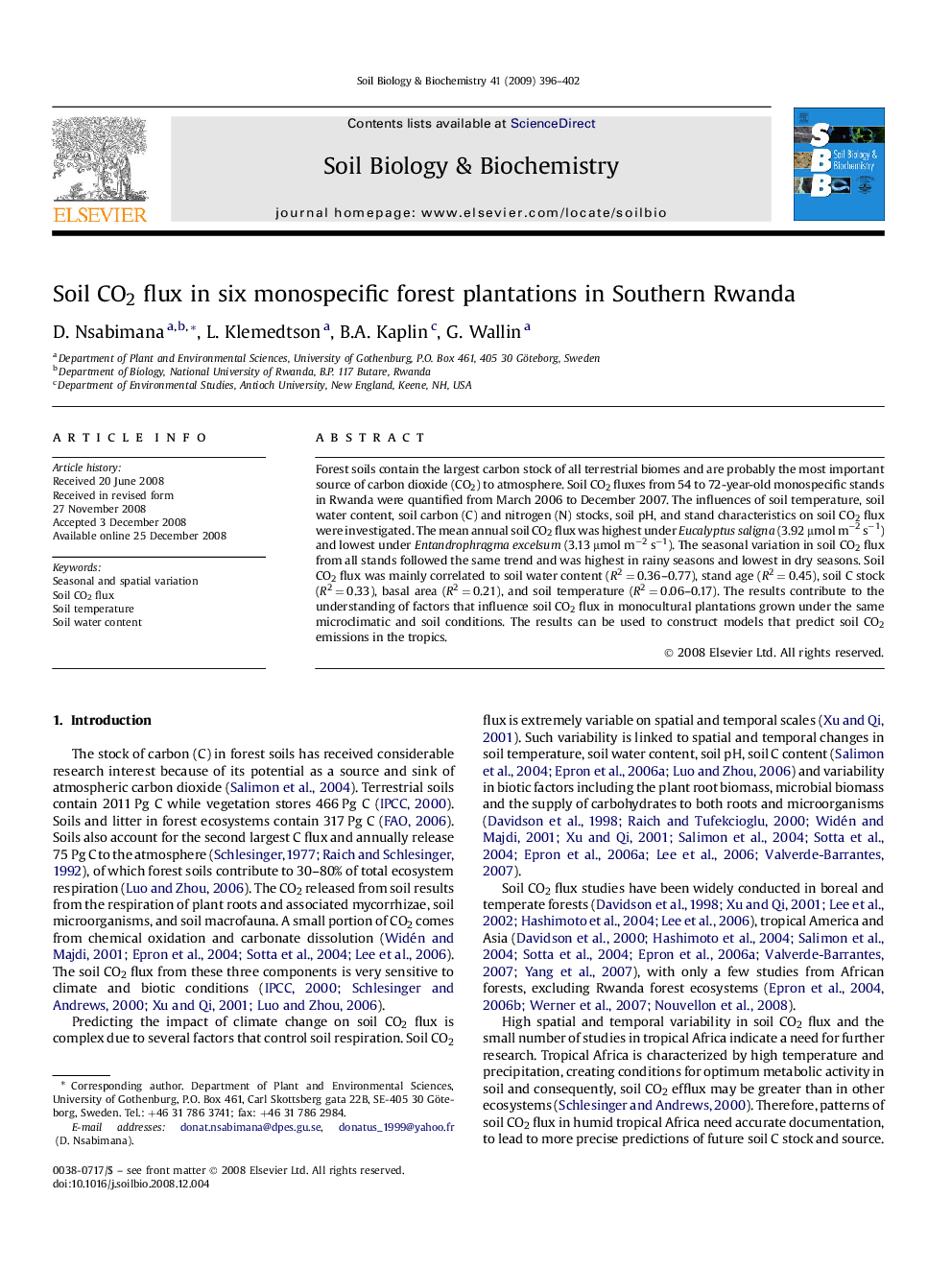| Article ID | Journal | Published Year | Pages | File Type |
|---|---|---|---|---|
| 2026142 | Soil Biology and Biochemistry | 2009 | 7 Pages |
Abstract
Forest soils contain the largest carbon stock of all terrestrial biomes and are probably the most important source of carbon dioxide (CO2) to atmosphere. Soil CO2 fluxes from 54 to 72-year-old monospecific stands in Rwanda were quantified from March 2006 to December 2007. The influences of soil temperature, soil water content, soil carbon (C) and nitrogen (N) stocks, soil pH, and stand characteristics on soil CO2 flux were investigated. The mean annual soil CO2 flux was highest under Eucalyptus saligna (3.92 μmol mâ2 sâ1) and lowest under Entandrophragma excelsum (3.13 μmol mâ2 sâ1). The seasonal variation in soil CO2 flux from all stands followed the same trend and was highest in rainy seasons and lowest in dry seasons. Soil CO2 flux was mainly correlated to soil water content (R2 = 0.36-0.77), stand age (R2 = 0.45), soil C stock (R2 = 0.33), basal area (R2 = 0.21), and soil temperature (R2 = 0.06-0.17). The results contribute to the understanding of factors that influence soil CO2 flux in monocultural plantations grown under the same microclimatic and soil conditions. The results can be used to construct models that predict soil CO2 emissions in the tropics.
Related Topics
Life Sciences
Agricultural and Biological Sciences
Soil Science
Authors
D. Nsabimana, L. Klemedtson, B.A. Kaplin, G. Wallin,
